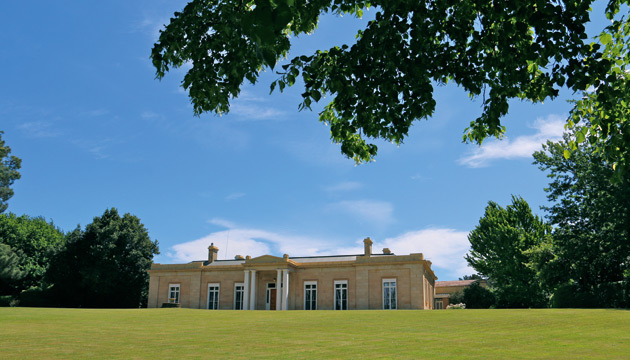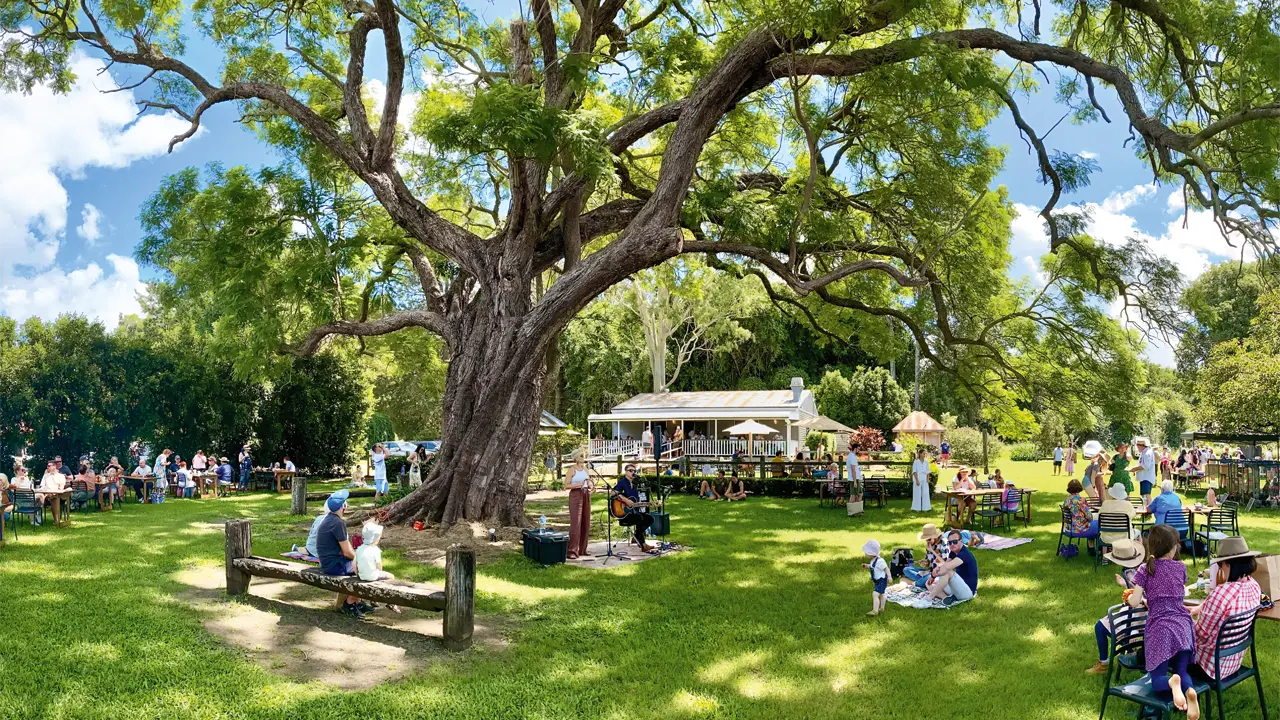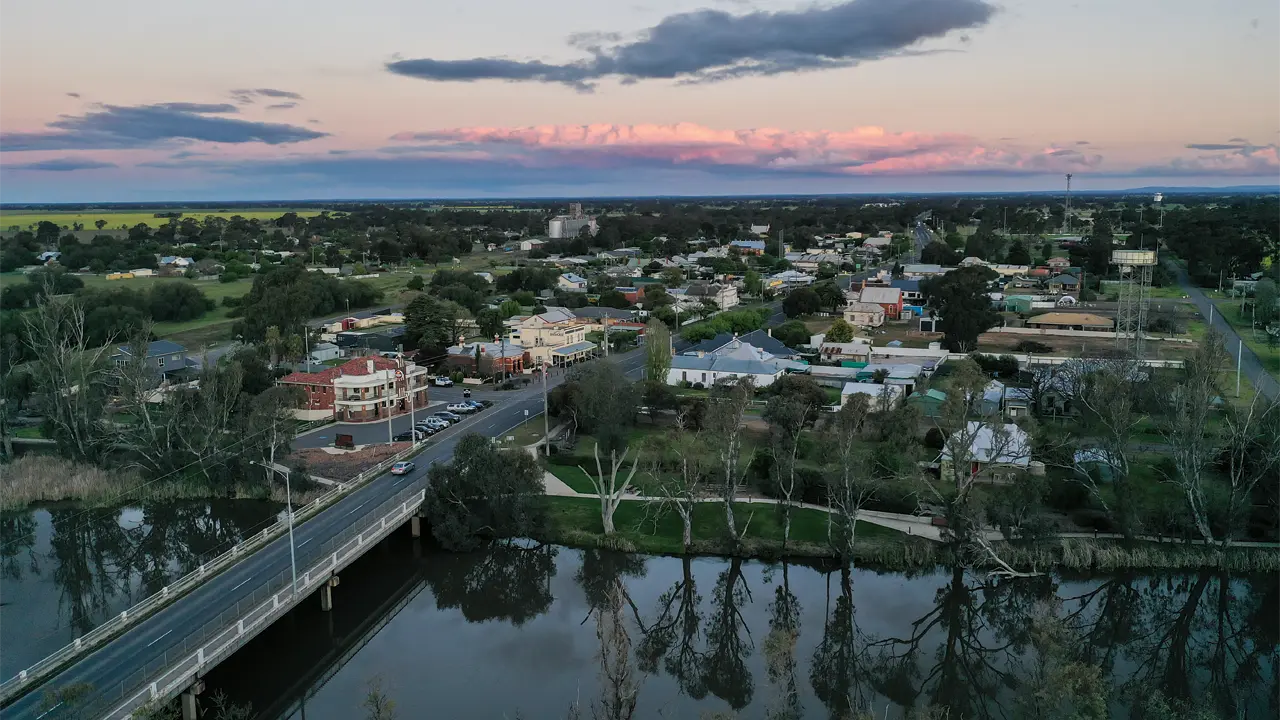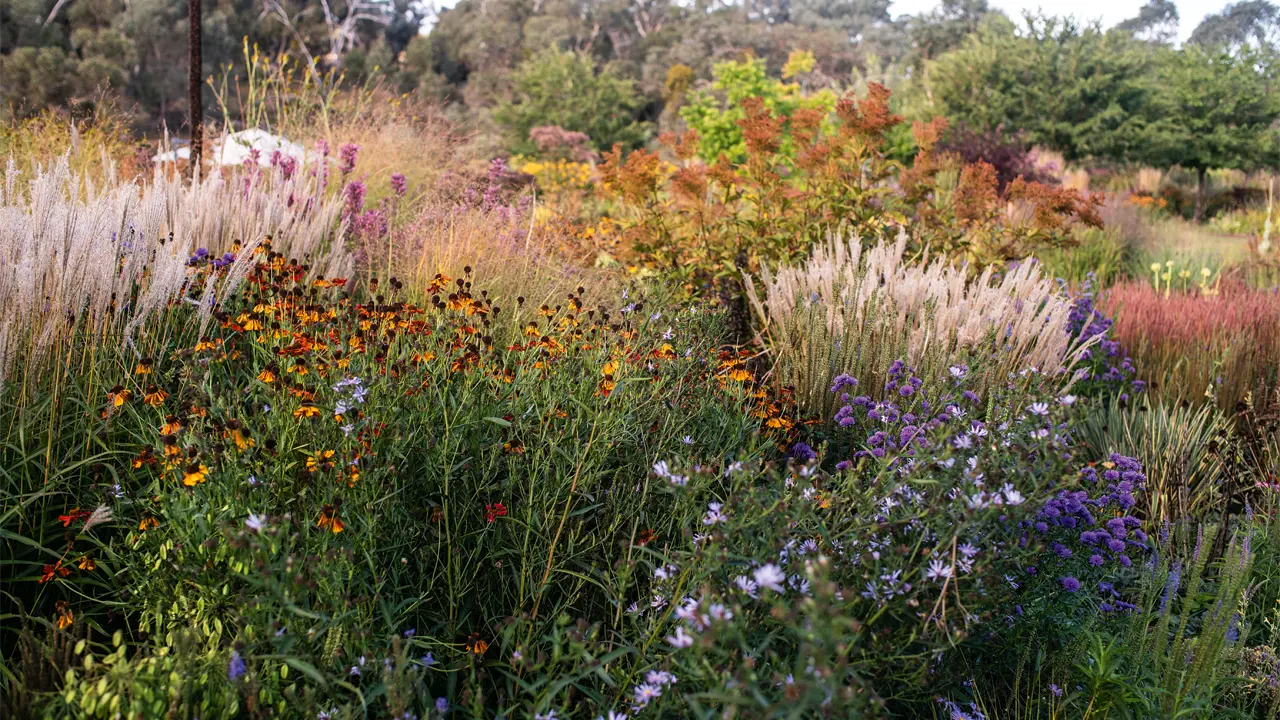The Mills family continues a tradition of nurturing the grounds on heritage-listed Panshanger.
Story and photo by Kim Woods Rabbidge
At Longford, Tas, a five kilometre-long entrance road passes through gently undulating paddocks on Panshanger, a 2500-hectare historic property. Plantings of elms, birch and pines are a sure sign that nurturing gardeners are in residence. The road leads to two lovely gardens covering 6ha, linked by woodland: one surrounding a grand, Grecian-inspired home where George and Maree Mills reside; the other embracing the ‘Gardener’s Cottage’, currently home to the Mills’ youngest son Nick, his wife Stacey and their three children.
George and Maree’s home sits on the highest point, overlooking an expansive lawn bordered by grand old trees. Lake River curves close by the bottom of the garden, and the cottage is nestled into a delightful position to the east, just a short walk from the main house – handy for visiting grandchildren.
Since 1821, when Panshanger was granted to Englishman Joseph Archer, only two families – the Archers and Mills – have owned the property. George Mills’ great-grandfather, a gold miner from Queensland, bought the property from the Archers in 1908 for his son Charles and his wife Maud (George’s grandparents).
Today, there are two large, enclosed vegetable gardens, continuing a tradition of productivity that began with the first settlement. Then, the property sustained family as well as the entire Panshanger community, including free and convict workers. Apples were harvested from the orchard and pressed for cider, which was sent to the goldfields. Today, the Mills farm extensive crops of cereals, seeds, vegetables and poppies, and graze beef cattle, Merinos for wool, and prime lambs. Irrigation is a vital part of their operation, with water drawn downstream from The Great Lake, where hydro-electric power is produced. The property fronts 14.5km of the Lake River.
Grandmother Maud was a very good gardener, but for various reasons, including two world wars, the gardens became neglected. That all changed in 1975 when George married Maree and they moved into the cottage. “The grounds were run-down, so Maree started resurrecting the garden, and has continued gardening ever since,” says George, who first constructed a levy bank to protect the cottage and grounds from floods. Then car bodies, rampant hawthorn, tyres and barbed wire had to be cleared.
“I first gardened near the house and gradually moved out,” says Maree who restored and extended beds. She really likes “the different plant combinations of shrubs and perennials at different times of the year”.
While there was a legacy of original plantings, including oaks, many old trees were reaching senescence and needed removing. Maritime pine had been planted for ship masts. Some of these and many radiata pines were ready to be replaced with special trees.
“Ken Gillanders, a horticulturist from Hobart, was great,” Maree says. “He helped with an assortment, including lindens, parrotias and Wellingtonias. The bottom of the woods is now my favourite part of the garden. Thirty years later, those trees are quite mature and I’ve kept about a third of the area beneath them mown. It makes them stand out more, especially the zelkova and lindens.” Over the past few years the Mills have appreciated the input of gardener Peter Wright. “He’s done an amazing amount of work, especially livening up the hedges,” George says.
In 1992 George’s parents were ready to move out of the large home and knew George, Maree, and their two sons and daughter would have the energy to undertake renovations. Panshanger is listed by the National Trust and registered on the National Estate, and modernising meant major electrical and plumbing work, which necessitated removing 40 truckloads of gravel from the back courtyard: a perfect opportunity to add good soil and, for Maree, to design a garden retreat.
Where once horses and buggies, then later cars and trucks, pulled up in a cloud of dust – or mud in the winter – there’s now a delightful courtyard protected by the homestead, the original cottage and nursery, which is now a B&B. “It’s made a big difference,” Maree says. “It’s pleasant in summer; in winter we catch the sun and we’re sheltered from the wind.” Roses are thriving, and in one corner a laden fig tree hangs over a structure adorned with lattice arches. Originally housing the generator, it now serves as the garden shed.
In the next couple of years George and Maree will move to a smaller residence on Panshanger, while the next generation move to the big house. “It makes sense,” George says. But he won’t be retiring to the coast. “No bloody way!” George says. “There’ll always be farm chores waiting – and work to do in Maree’s next garden.”
This story excerpt is from Issue #111
Outback Magazine: Feb/March 2017










